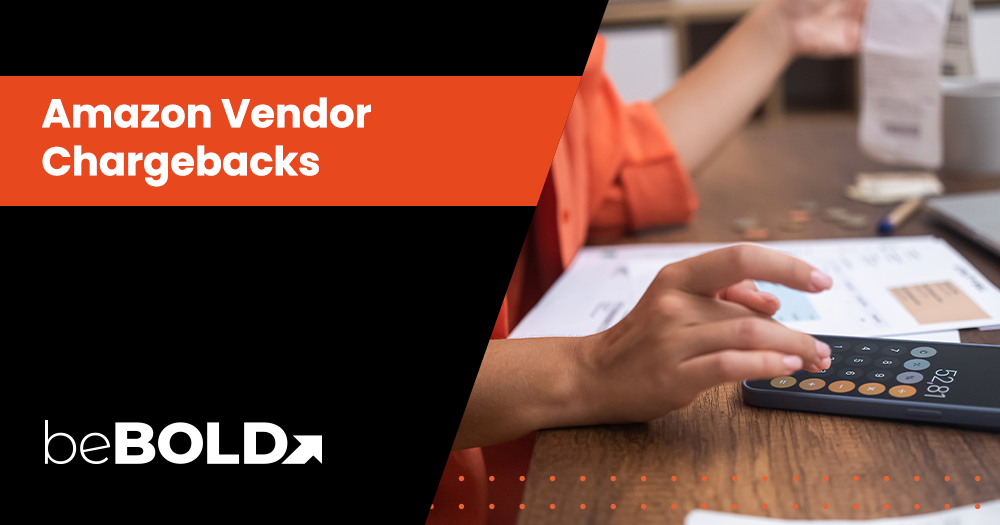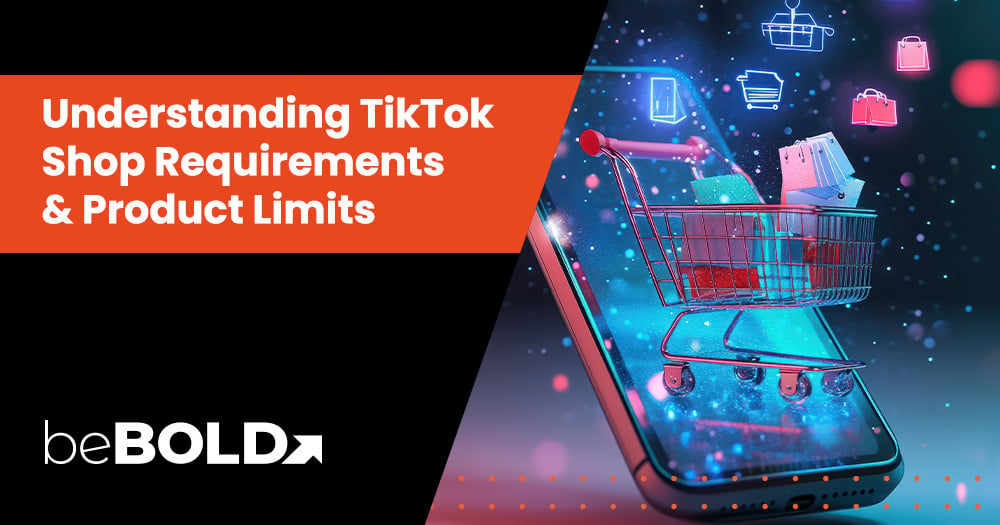Selling via Amazon's Vendor Center platform is regarded as a prestigious privilege by certain brands. Working with Amazon, however, is no easy job, as sellers need to meet some specific requirements. These requirements are operational, and failing to comply leads to increased supplier costs. As an Amazon Vendor, you will likely have experienced an Amazon Vendor Chargeback—fees that can add up quickly and impact your bottom line. These charges often stem from failing to meet Amazon's strict operational requirements, which can be overwhelming to manage.
The good news is In this blog, we’ll walk you through how chargebacks work, why they happen, and the steps you can take to avoid and recover them so you can keep more of your hard-earned revenue and maintain a strong partnership with Amazon. Let's get started!
What is Amazon Vendor Chargeback and Their Financial Impact on Your Profit Margins?

Chargebacks are fees imposed on Amazon Vendors who do not follow the site’s guidelines. They can be quite hefty, too, eating away at your profit margin. It’s important for vendors to be aware that chargeback is a type of fee that is tied to operational metrics and to know how to prevent it. The automation system at Amazon is helping the company grow faster and enhance customer support. Amazon's machine learning process is problematic because machines can sometimes be wrong.
However, when it comes to Amazon vendor chargebacks, we look at operational charges and deductions for non-compliance with Amazon's set standards against charge disputes. As we intimated in the preceding section, Amazon's automated framework helps the company to scale faster and enhance its customer service.
The problem with Amazon's machine-driven processes is that machines often make mistakes. When such mistakes happen, it results in deductions and chargebacks, which significantly burden vendors depending on the chargeback type.
These chargeback fees are not payments requested by Amazon; they are automatically deducted from the vendor's invoice. Thus, the initiative for Amazon to improve its systems is low.
How Amazon Handles Chargebacks?
When vendors fail to comply with Amazon's stringent policies, Amazon may take various actions, including refusing inventory, returning or disposing of stock, blocking future shipments, and engaging in problem resolution related to the vendor's preparation process.
Here's why Amazon imposes chargebacks:
- Efficiency Disruption: Non-compliance can disrupt Amazon's highly organized operations, leading to delays and inefficiencies.
- Unexpected Costs: Failures to follow guidelines can incur additional costs for Amazon, such as increased labor, storage, and disposal fees.
- Operational Impact: Non-compliance can slow down Amazon's processes, affecting overall efficiency and potentially impacting customer delivery times.
Types of Amazon Chargebacks and How to Avoid Them
Chargebacks can significantly impact a vendor's profitability and reputation. To avoid these penalties, it's crucial to understand the common reasons related to Amazon chargebacks and implement strategies to prevent them. In this section, we have discussed the common types of chargebacks and how to avoid them. Let's dive in!
ASN (Advance Shipment Notification) Accuracy
ASN (Advance Shipment Notification) Accuracy refers to the percentage of ASNs submitted without errors. An ASN is a document sent by a vendor to a retailer or buyer before a shipment, detailing the required information like carrier, tracking number, product SKUs, quantities, and delivery dates. ASN accuracy ensures efficient inventory management, faster order processing, reduced errors and chargebacks, and improved relationships with buyers.
How to avoid: Sellers must ensure the ASN matches the shipment's actual contents and tracking information to avoid ASN Accuracy chargeback.
Carton Content Accuracy
Carton Content Accuracy refers to the degree to which the actual contents of a shipment carton match the information provided in the Advance Shipment Notification (ASN). This includes the number of items, product types, and specific packaging requirements. High carton content accuracy is crucial for efficient warehouse operations, accurate inventory management, and timely order fulfillment.
How to avoid: To avoid this chargeback, sellers must carefully verify that each carton contains the correct items as specified in the shipment details.
Carton Information Compliance
Carton Information Compliance Chargeback refers to the adherence to specific labeling and packaging requirements for each carton shipped to a retailer or fulfillment center. This includes accurate labeling with barcodes, clear identification of the carton's contents, and compliance with any specific retailer guidelines.
How to avoid: Ensuring all cartons are accurately labeled with scannable barcodes and their contents match the shipping and packing details can help ward off this chargeback.
Import Documents Late Delivery
Import Documents Late Delivery occurs when a vendor fails to submit the required import documents to Amazon within the specified timeframe. These documents, such as commercial invoices, packing lists, and certificates of origin, are essential for customs clearance and timely delivery of the shipment. Late submission can delay the customs clearance process, leading to shipment delays, increased storage costs, and potential late delivery chargeback penalties for Amazon.
How to avoid: Vendors must ensure the timely submission of accurate and complete import documents to avoid this chargeback,
Import PO On-Time Non-Compliance
Import PO On-Time Non-Compliance occurs when a seller fails to fulfill a placed Purchase Order (PO) within the delivery window specified by Amazon. Timely fulfillment of POs is critical for maintaining efficient inventory flow and meeting customer demand. Non-compliance can disrupt Amazon's supply chain, leading to inventory shortages or logistical inefficiencies. This, in turn, results in a chargeback penalty for the seller.
How to avoid: To avoid this issue, sellers must closely monitor delivery timelines, coordinate shipments effectively, and ensure products arrive within the agreed timeframe. Compliance with these requirements supports smoother operations and avoids financial penalties.
Import Shipment Late Booking
Import Shipment Late Booking chargeback refers to a fee imposed when a seller fails to book their shipment for transportation within Amazon's required timeframe. Timely booking is essential for coordinating logistics, ensuring proper transportation scheduling, and avoiding disruptions in the supply chain. Late bookings can delay the arrival of goods at Amazon's fulfillment centers, potentially impacting inventory levels and customer satisfaction.
How to avoid: To avoid this chargeback, sellers should adhere to the booking deadlines provided by Amazon and plan their shipments proactively. This helps ensure a seamless supply chain and avoids unnecessary penalties.
No Show
No Show chargeback is an Amazon penalty applied when a seller fails to deliver a scheduled shipment to the designated Amazon facility on the confirmed date and time. This non-compliance disrupts Amazon’s logistics and fulfillment operations, causing delays in inventory processing and potentially impacting customer satisfaction. A "No Show" typically occurs when the shipment is not tendered, arrives without proper booking confirmation, or misses the appointment.
How to avoid: This chargeback can be avoided by ensuring accurate booking, timely transportation, and strict adherence to scheduled delivery windows.
PO On-Time Accuracy
Amazon expects sellers to deliver exactly what is specified in the PO and on time. Failing to meet these expectations, either in timing or item accuracy, results in PO on-time accuracy chargeback. It underscores the importance of precise order management.
How to avoid: Focusing on precise order management by thoroughly reviewing Purchase Order (PO) details and confirming the exact quantities and delivery timelines can help avoid this chargeback.
Oversized Carton
Oversized Carton chargebacks are issued when a seller's shipment includes cartons that exceed Amazon’s specified size dimensions. Amazon enforces strict size limits to optimize storage space, streamline handling, and improve transportation efficiency within its fulfillment centers. Cartons larger than the permitted dimensions can disrupt these processes, requiring additional resources for storage and movement.
How to avoid: It is important for sellers to carefully review and adhere to Amazon’s packaging guidelines, ensuring cartons comply with the specified length, width, and height limits.
Overage PO Units
Overage PO Units chargebacks occur when a seller ships more units than specified in the Purchase Order (PO). This overage creates discrepancies in Amazon’s inventory planning, leading to storage inefficiencies and potential overstock issues in fulfillment centers.
How to avoid: To avoid this chargeback, carefully review PO details and ensure shipment quantities match the order exactly.
Overweight Carton
An Overweight Carton chargeback is issued when a shipment contains cartons that exceed Amazon's weight limits. Overweight cartons can pose safety risks to workers, damage other products, and increase Amazon's handling and shipping costs.
How to avoid: To avoid this chargeback, vendors should weigh cartons before shipping to ensure they meet Amazon's weight limits. Optimizing packaging and carton size can help prevent overweight charges.
Paper Invoice
A Paper Invoice chargeback is issued when a vendor submits a paper invoice instead of a PDF invoice or electronic invoice. Amazon prefers electronic invoices for efficient processing and data management. Paper invoices can slow the processing time, increase manual effort, and lead to errors.
How to avoid: This chargeback can be avoided by submitting invoices electronically through Amazon's preferred channels, such as Vendor Central or EDI.
Prep Issues
A Prep Issues chargeback is issued when a shipment contains products that are not properly prepared for sale. This includes issues such as incorrect or missing labels, damaged packaging, or insufficient protective materials that can impact your vendor account. Poorly prepared products can be damaged during transit or handling, leading to returns, customer dissatisfaction, and increased costs for Amazon.
How to avoid: Vendors must follow Amazon's specific preparation guidelines for each product category, ensuring that products are properly labeled, packaged, and protected.
Rejected Delivery
When a shipment is rejected by Amazon due to various reasons, such as damage, contamination, or non-compliance with Amazon's quality standards, the Rejected Delivery chargeback is issued. This can occur if the products are damaged during transit, contaminated, or do not meet Amazon's specific requirements for labeling, packaging, or product condition, as outlined in the vendor manual.
How to avoid: Ensure products are properly packaged, protected, and meet Amazon's quality standards to avoid this chargeback.
Ships In Own Container
If a vendor ships a large quantity of products in their own container instead of using Amazon's preferred shipping methods, they are charged with Ships In Own Container chargeback. This can lead to inefficiencies and additional costs for Amazon, as it requires special handling and processing.
How to avoid: Vendors should adhere to Amazon's shipping guidelines and use the designated shipping methods and carriers, avoiding unnecessary complications and penalties.
5 Most Common Amazon Chargebacks with Examples of How They May Happen
Chargebacks can arise from various issues, including incorrect labeling, mismatched shipments, or delays in delivery. Understanding the most common chargebacks and how they happen can help vendors avoid costly mistakes and improve their performance on Amazon’s platform. In this section, we have discussed five of the most frequent chargebacks and provided examples of how they may occur.
PO On Time Accuracy
PO (Purchase Order) On Time Accuracy evaluates how well a vendor adheres to the specified shipping or delivery window outlined in the purchase order. Below are the typical sub-categories of PO On Time Accuracy issues with examples of how they may happen:
1. NotOnTime
What Happens: Collect vendors request a Freight Ready Date (FRD) after the PO’s shipping window closes, or prepaid carriers request a first delivery date (CRDD) after the delivery window ends. Early or late shipments are penalized.
Example: A vendor ships an order three days after the PO's designated shipping window closes, or delivers the products too early, disrupting Amazon’s inventory planning.
2. NotFilled
What Happens: The vendor fails to send the full quantity of items confirmed in the PO, resulting in incomplete shipments.
Example: A vendor confirms a PO for 1,000 units but ships only 850 units due to a stock shortage. This results in a chargeback for not fulfilling the entire order.
ASN Accuracy
ASN (Advance Shipment Notification) Accuracy measures how well the virtual shipment data provided in the ASN aligns with the actual physical shipment received at Amazon’s Fulfillment Center (FC). Here are the sub-types of ASN Accuracy issues and examples of how they may occur:
1. On-Time Non-Compliance (ONTC)
What Happens: No ASN is received for the shipment associated with the PO-ASIN combination.
Example: A vendor ships a purchase order, but the required ASN is not submitted before the shipment reaches the fulfillment center. This oversight triggers a chargeback for ONTC.
2. Unit Count Mismatch
What Happens: There is a discrepancy between the number of units declared in the ASN, the number of units received, and the units listed in the PO.
Example: The ASN states 500 units will be shipped, but only 450 units are delivered. This mismatch leads to a chargeback.
3. Invalid/Missing ARN (Amazon Reference Number)
What Happens: Vendors on We-Pay or Collect shipping terms fail to include the correct ARN or provide an invalid ARN in the ASN.
Example: A vendor submits an ASN with an incorrect ARN, causing processing delays and resulting in a chargeback.
4. Missing Expiration Date
What Happens: Products that require expiration dates, according to Amazon’s catalog, are shipped without expiration dates listed in the ASN.
Example: A vendor ships perishable goods like food or supplements but fails to include their expiration dates in the ASN, leading to a chargeback.
5. PRO/BOL Mismatch
What Happens: Vendors on They-Pay or Prepaid shipping terms provide incorrect PRO (Pro Number) or BOL (Bill of Lading) details compared to the carrier’s appointment data.
Example: The BOL submitted in the ASN doesn’t match the one used by the carrier during shipment, triggering a chargeback for a data mismatch.
Carton Content Accuracy
Carton Content Accuracy evaluates whether the physical contents of a carton match the virtual records provided in the Advance Shipment Notification (ASN). Below are the most common sub-types of Carton Content Accuracy issues and examples of how they can occur:
1. Shortage
What Happens: The number of units in the carton is less than what was listed in the ASN.
Example: An ASN indicates 20 product units are in a carton, but only 18 units are found upon arrival at the fulfillment center. This discrepancy results in a shortage chargeback.
2. Unexpected Item Overage (UIO)
What Happens: Items not listed in the ASN are present in the carton.
Example: The ASN specifies 10 units of a product in the carton, but upon inspection, the carton contains the expected 10 units plus 3 additional units of a different product. This creates a defect count of 3 unexpected units, leading to a UIO chargeback.
3. Unexpected Quantity Overage (UQO)
What Happens: The carton contains more units of an item than expected based on the ASN.
Example: The ASN states 2 units of a product will be in the carton, but 5 units are received. The excess of 3 units results in a UQO chargeback.
4. Case Pack Defect
What Happens: The total number of units in a carton with inner or master packs does not align with the ASN, often due to mislabeling.
Example: The ASN indicates 12 units are in a carton, but the carton contains 6 packs with 2 units each. Since the ASN expected 12 individual units, all units are treated as defective, leading to a chargeback for mislabeling.
No Carton Content Label (no CCL)
The No Carton Content Label (No CCL) chargeback occurs when a carton does not have an acceptable carton content label, the label is unscannable, or the label information is missing from the Advance Shipment Notification (ASN). Below are the common sub-types of No CCL chargebacks and examples of how they can occur:
1. No Valid License Plate (LP) Label Present on Carton
What Happens: The required LP label is either missing or unreadable due to poor print quality or improper placement on the carton.
Example: A vendor ships a carton without a label or places the label over the seam of the box, making it unscannable by Amazon’s system. This results in a chargeback.
2. LP Label Not on Advance Shipment Notification (ASN)
What Happens: The LP label information is not included in the ASN, making it impossible for Amazon to link the physical carton to the shipment records.
Example: A vendor submits an ASN but omits the LP label data, triggering a chargeback for incomplete shipment documentation.
3. Serialized Ship Container Code (SSCC) Not Uploaded
What Happens: For direct import vendors, the SSCC label data is not uploaded to the Century Distribution Systems (CDS) portal within the required five-day service level agreement.
Example: A vendor misses the deadline to upload SSCC data, leading to a chargeback for failing to meet the service level requirements.
4. GTIN-14 Gold List Missing
What Happens: When Amazon fails to read the LP label, it relies on the GTIN-14 barcode as a backup. If the GTIN-14 is not registered on the Gold List, the carton cannot be processed.
Example: A vendor ships a carton with a GTIN-14 barcode that is not registered on Amazon’s Gold List, resulting in a chargeback for improper barcode management.
Non Compliant Barcodes
A Non-Compliant Barcode chargeback occurs when a product is shipped without a proper item barcode or the barcode cannot be scanned. Amazon requires that each product includes a scannable identification barcode (such as UPC, ASIN, EAN, ISBN, etc.) printed clearly on the packaging to facilitate accurate inventory tracking and processing at the fulfillment center. Below is an example of how a Non-Compliant Barcode chargeback may occur:
Example: A vendor ships a product that does not have a barcode printed on the packaging, making it impossible for Amazon’s system to identify and process the product upon arrival.
Causes and Sources of Amazon Vendor Chargebacks
Amazon has several reasons for chargebacks and shortages, which can be found below. Understand the methods for avoiding each other.
How do I dispute Amazon chargebacks?
You may contest the decision in case you find a chargeback notification was sent. However, you must have evidence that will prove that you understand it correctly. The supporting documents must be sent via email to Amazon Pay.
In order to sell your product on Amazon, you must have the transaction status at a minimum. There will be many documents to support your request. Those are orders confirmed by email, tracking numbers, or other customer communication data. Typically, this process takes about 90 days to decide on an issue.
How to avoid chargeback fees?
If you feel the cost to avoid the chargebacks should have been less expensive, then no pun intended. You have to be confident that Amazon gets the information on the SSN and that everything is accurate. However, many things go wrong.
After a shipment is prepared, the vendor must verify that the number of units in the shipment reflects what the shipment contains and that each tracking identifier corresponds to the tracking number. This information is also required if you sell products that have a valid expiration date.
Reviewing Chargeback Performance and Identifying Trends
Reviewing chargeback performance and identifying trends is essential for sellers to maintain a healthy relationship with Amazon and optimize their operational efficiency. By regularly analyzing chargeback data, sellers can spot recurring issues, identify areas for improvement, and take proactive steps to avoid future penalties. This section will guide you through the common key metrics and trends that can help you reduce chargebacks over time.
To effectively manage chargebacks, it's essential to have a clear understanding of your chargeback performance. This involves tracking key metrics such as:
- Chargeback Rate: The percentage of transactions that result in a chargeback.
- Chargeback Cost: The total financial cost associated with chargebacks, including fees and lost revenue.
- Win Rate: The percentage of chargebacks successfully contested and reversed.
- Time to Resolution: The average time taken to resolve a chargeback dispute.
Some common trends to look for include:
- Seasonal Trends: Certain types of chargebacks may be more prevalent during specific times of the year, such as holiday seasons or peak shopping periods.
- Product-Related Trends: Certain products or product categories may be more prone to chargebacks due to quality issues, shipping delays, or customer dissatisfaction.
- Customer-Related Trends: Certain customer demographics or behaviors may be associated with higher chargeback rates.
- Payment Method Trends: Different payment methods may have varying chargeback rates.
Amazon Chargeback Fees Overview – Understanding the Cost Breakdown
Here's a breakdown of the fees associated with common Amazon chargeback types:
|
Chargeback Type |
Chargeback Cost |
|
ASN Accuracy |
2-6% of COGS |
|
Carton Content Accuracy |
$2.6 per unit |
|
Carton Information Compliance |
$10 per box |
|
Import Documents Late Delivery |
$150 per document, +$50 per each additional day |
|
Import PO On-Time Non-Compliance |
3% of COGS |
|
Import Shipment Late Booking |
3% of COGS |
|
No Show |
$50-$250 |
|
PO On-Time Accuracy |
3-10% of COGS |
|
Oversized Carton |
$25 per box |
|
Overage PO Units |
10% of COGS |
|
Overweight Carton |
$25 per box |
|
Paper Invoice |
n/a |
|
Prep Issues |
$0.63-$1.26 per unit |
|
Rejected Delivery |
3% of COGS |
|
Ships In Own Container |
$1.8-$4.4 per unit |
The Hidden Costs of Chargebacks
Chargebacks are more than just financial penalties; they erode sales and customer satisfaction.
Imagine a tech company, TechCorp, that faced a surge in chargebacks due to late shipments. While the financial penalties were a concern, the real damage was to their brand reputation. Late deliveries led to frustrated customers, negative reviews, and a decline in customer trust. TechCorp responded by streamlining its logistics processes, investing in better inventory management, and improving carrier communication. These efforts significantly reduced late shipments and restored their reputation as a reliable seller.
How to Avoid Amazon Vendor Chargebacks? A Step-by-Step Guide
To prevent chargebacks, prioritize these steps:
- Confirm Purchase Orders Promptly: Quickly confirm POs to ensure smooth transactions.
- Ensure On-Time Shipment: Partner with reliable couriers and maintain buffer time to avoid late shipments.
- Correctly Label Items: Invest in quality control to prevent labeling errors and misroutes.
- Package Items Appropriately: Follow Amazon's packaging guidelines to minimize damage.
- Maintain Sufficient Inventory: Avoid stockouts and fulfill all POs promptly.
How to Read and Interpret Chargeback Status Types

When reviewing chargebacks, you'll encounter different status types. Here's a breakdown:
- Waived - Notification Only: Amazon has decided not to pursue the chargeback. No action is required.
- Reversed: The chargeback was initially applied but has been canceled. You'll receive a refund in the next billing cycle.
- Charged: The chargeback was successful, and you must pay the amount.
- Grace Waived - Notification Only: The chargeback is waived as a one-time exception, but future issues may result in charges.
- Dispute Approved: Your challenge to the chargeback was successful. You won't be charged.
- Dispute Denied: Your challenge was unsuccessful, and you'll still be charged.
- Grace Period - Notification Only: You can fix the issue without immediate payment, but future problems may lead to charges.
- Dispute in Review: Amazon is currently reviewing your dispute.
- Pending Invoice: The chargeback is still pending; an invoice will be issued later.
- Need More Information: Amazon requires additional information to process the chargeback or dispute.
How to Dispute Erroneous Amazon Chargebacks Successfully

Amazon may sometimes issue incorrect chargebacks. If you believe a chargeback is unjustified, you can dispute it. In the next section, we will guide you through the essential documentation for disputing chargebacks and the step-by-step process for filing disputes on Amazon Vendor Central. Stay tuned!
Essential Documentation for Disputing Chargebacks
To effectively dispute a chargeback, it's crucial to gather and submit the necessary documentation. This evidence will strengthen your case and increase your chances of a successful resolution. Here are some essential documents to consider:
- Purchase Order (PO)
- Shipping Documents
- Proof of Delivery
- Product Images
- Customer Communication
- Internal Investigation Reports
Step-by-Step Process for Filing Disputes on Amazon Vendor Central
Here's a step-by-step guide on how to dispute erroneous Amazon chargebacks:
- Access your Vendor Central account.
- Click on the "Reports" tab.
- Select "Operational Performance" from the dropdown menu.
- Click the "View defect list" button in the top right corner.
- Locate the specific chargeback you want to dispute.
- Click the "Dispute" button in the top left corner.
- Attach any relevant documents that support your claim.
- Submit your dispute within 30 days of the chargeback appearing in Vendor Central.
Best Practices to Avoid Amazon Chargeback Fees
Amazon chargebacks can significantly impact your business's bottom line. They can lead to financial penalties, damaged reputation, and account suspensions. To mitigate these risks, it's crucial to implement effective strategies to prevent chargebacks. In the following section, we will discuss the best practices that can help you avoid Amazon chargebacks and protect your business.
Always Maintain Accurate and Complete Documentation
To avoid Amazon chargebacks, it's crucial to maintain accurate and complete documentation for all your shipments. This includes purchase orders, shipping documents, proof of delivery, and product images. By having this documentation readily available, you can quickly and effectively respond to any chargeback claims, ensuring a smooth shipping process.
Additionally, accurate and complete documentation can help you identify potential issues in your supply chain and take corrective actions.
Consistent Monitoring of Vendor Central Performance Metrics
Regularly monitoring your Vendor Central performance metrics through the operational performance dashboard is essential to identify potential issues before they escalate into chargebacks. Keep a close eye on key metrics such as order defect rate, late shipment rate, and customer returns. By proactively addressing any performance issues, you can minimize the risk of chargebacks and maintain a positive relationship with Amazon.
How to Recover Amazon Vendor Chargebacks and Shortages Efficiently
The following section will help you recover Amazon Vendor Chargeback fees and shortages effectively. Get a quick and easy way to recover Amazon fees. The following guides should help you avoid Amazon's chargeback recovery.
Key Tips to Recover Up to 3 Years of Chargeback Fees
Even if Amazon's automated systems have made commerce easier, both by vendor and company, they are not perfect in every regard. Some companies incur fees to fix errors they make in technology. And unless that is the case, you must prove the deductibility of the money you shouldn't have withheld.
If you lack adequate evidence, you won't get the money that is lost. Keep track of all important shipment details, including BOL, NDA, photos, and shipment documents, and provide them for your entire team to use.
Chargeback Recovery Services – How beBOLD’s Amazon Vendor Chargeback Recovery Service Can Help
beBold's Amazon Vendor Chargeback Recovery service provides a solution to help eliminate lost profits and can recover up to 93% of profit leakage across several years of transactions.
- An automated accounting platform that analyzes up to five years’ worth of accounting data to find errors in claims and identify duplicate billing and chargeback
- Automatically reporting errors and recouping funds back to the vendor
- Providing vendors full transparency into findings during auditing and reconciliation
- Course correcting recurring issues, enabling vendors to maximize future profitability
- No upfront costs, and they are available based on a percentage of recovered funds
Our Amazon Vendor Chargeback Fees solution extends to three key categories:
- Dispute Management: Protects vendors from missing the opportunity to dispute transactional entries from both payables and receivables and allows them to initiate disputes and recover unwarranted deductions seamlessly.
- Financial Operations: A fully automated solution that significantly reduces the number of resources required to 0.25 FTE (full-time employee).
- Financial Planning: Infuses AI predictive insights and advanced analytics through machine learning to help vendors make smarter business decisions and drive future-ready performance.
With the help of a chargeback audit and recovery service from beBOLD, you can get your money back up from up to 5 years ago. So, if you've been hit with an Amazon Vendor Chargeback fee, contact us today for a free audit of your account- we may be able to help you get your money back!
Final Thoughts
No one likes to be charged a fee by Amazon, but it is something that happens from time to time. While it can be frustrating, understanding the reasons behind these charges and proactively addressing them can significantly reduce their frequency.
If you do find yourself in the unfortunate situation of being charged a Vendor Chargeback fee, don't despair! Remember, chargebacks are an opportunity to refine your processes, improve efficiency, and strengthen your partnership with Amazon for long-term success. Keep focusing on compliance issues, and you’ll be well on your way to reducing unnecessary fees and boosting your business performance.
Amazon Vendor Chargeback Fees - Frequently Asked Questions
How do I recover Amazon vendor chargeback fees?
You can recover Amazon vendor chargeback fees through an audit process, which should be conducted to ensure that all charges are accurate and verifiable. This involves conducting a detailed review of your account and its associated orders and examining discrepancies between what was promised and what was delivered to find detailed information on chargeback issues. In some instances, you may also seek refunds for up to five years of previous charges that were not disputed in the past.
Can Amazon Vendor Central Issue Refunds for Chargebacks?
Amazon generally does not issue refunds for Vendor Chargebacks once they have been applied. However, sellers can dispute chargebacks if they believe the chargeback amount was applied in error. To dispute a chargeback, the seller must provide supporting evidence through Amazon Vendor Central, and if the dispute is successful, the chargeback fee may be reversed.
What Are the Different Types of Amazon Vendor Chargeback Fees?
Amazon Vendor Chargebacks can vary based on different operational issues, including late shipments, incorrect product preparation, mismatched quantities, or failure to meet packaging standards. Common chargeback fees include those for late deliveries, inaccurate ASN (Advance Shipment Notification), oversized cartons, and improper labeling, among others. Each fee is linked to specific compliance failures within Amazon’s requirements.
How Can I Dispute Chargebacks Through Amazon?
To dispute a chargeback, sellers must log into their Amazon Vendor Central account and navigate to the chargeback details. From there, they can submit a dispute by providing the necessary documentation and evidence that supports their claim. If the dispute is successful, Amazon may reverse the chargeback fee. It's important to ensure all required documentation is accurate and submitted within the designated time frame to improve the chances of a successful dispute.








Comments